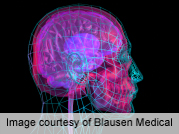
FRIDAY, Aug. 9 (HealthDay News) — Migraine sufferers are more likely than other people to have an incomplete network of arteries that supply blood to the brain, researchers have found.
It was once believed that migraines were caused by dilation of blood vessels in the brain, while more recently it has been attributed to abnormal brain signal activity. This study suggests that blood vessels play a different role than previously suspected.
An incomplete network of arteries may increase a person’s susceptibility to changes in brain blood flow, contributing to the abnormal brain signal activity that triggers migraines, according to the University of Pennsylvania researchers.
For the study, the investigators used a special MRI method to measure changes in blood flow in the brain, as well as magnetic resonance angiography to examine blood vessel structure.
“People with migraines actually have differences in the structure of their blood vessels — this is something you are born with,” study lead author Dr. Brett Cucchiara, an associate professor of neurology, said in a university news release.
“These differences seem to be associated with changes in blood flow in the brain, and it’s possible that these changes may trigger migraine, which may explain why some people, for instance, notice that dehydration triggers their headaches,” Cucchiara said.
The study included 170 people in three groups: those with no headaches, those with migraines with aura and those with migraines without aura. An incomplete network of arteries in the brain was found in 73 percent of people with migraines with aura, 67 percent of people with migraines without aura and 51 percent of those who were headache-free.
Arterial network abnormalities were most common in the back of the brain, where visual images are processed. This may explain why the most common migraine auras consist of visual symptoms such as seeing distortions, wavy lines or spots, the researchers said.
The study was published recently in the journal PLoS One.
Because both migraine headaches and the types of arterial structures seen in the study patients are common, Cucchiara’s team noted that the association does not prove a cause-and-effect relationship. It is likely that the incomplete network of arteries is just one of many factors that could contribute to migraines, they said in the news release.
More information
The U.S. National Institute of Neurological Disorders and Stroke has more about migraines.
Copyright © 2025 HealthDay. All rights reserved.

